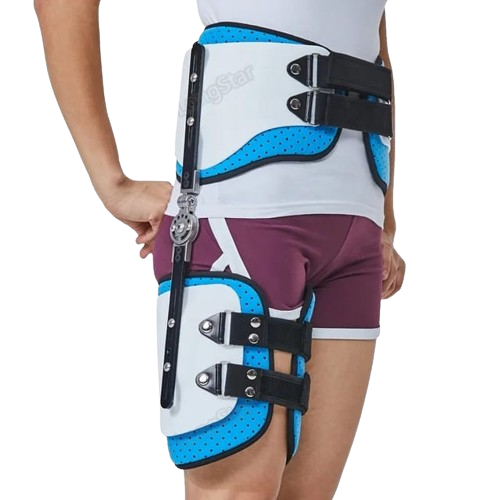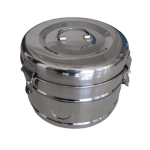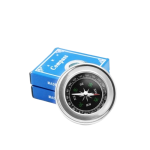A hip brace with ROM (Range of Motion) is a medical support device designed to stabilize the hip joint while allowing controlled movement. It’s often used after surgeries like hip replacement, dislocation, labral repair, or fractures, and helps in rehabilitation by restricting or controlling motion to aid healing and prevent further injury.
🔧 Key Features of a Hip Brace with ROM:
- Adjustable Range of Motion Hinges:
- Allows setting flexion and extension limits (e.g., 0° to 120°).
- Helps control how much the hip can move during recovery.
- Pelvic and Thigh Straps:
- Secure the brace around the waist and thigh to ensure stability.
- Often padded for comfort and prevent slipping.
- Telescoping or Adjustable Length Bars:
- Allows customization to different leg lengths and body sizes.
- Lightweight Materials:
- Typically made of aluminum, plastic, or breathable padding for patient comfort.
- Tool-Free Adjustments:
- Many models allow ROM and size adjustments without tools.
✅ Things to Consider Before Buying a Hip Brace with ROM:
- Purpose & Prescription:
- Ensure the brace fits the doctor’s recommendation (e.g., post-surgical, injury recovery).
- Some conditions require specific angle restrictions.
- Adjustability & ROM Settings:
- Check if the brace allows precise control of flexion/extension.
- Look for easy-to-use locking mechanisms.
- Size & Fit:
- Choose a brace with adjustable sizing or the correct size based on hip circumference and thigh measurement.
- Poor fit may reduce effectiveness or cause discomfort.
- Comfort & Padding:
- Padded liners or breathable fabric reduce skin irritation and improve wearability.
- Mobility Needs:
- Consider how easily the brace allows walking or sitting.
- Some braces are more rigid than others — choose based on the level of mobility your doctor allows.
- Weight & Bulkiness:
- Heavier braces may offer more support but may be uncomfortable for extended wear.
- Ease of Use:
- Look for braces that are easy to put on and take off, especially for elderly or limited-mobility users.
- Durability & Build Quality:
- Strong hinges, reinforced straps, and high-quality materials ensure long-term support.
- Post-Purchase Support:
- Consider brands with good customer service, instructions, and return/exchange policies.
- Cost & Insurance:
- Check whether the brace is covered by insurance or requires out-of-pocket purchase.






